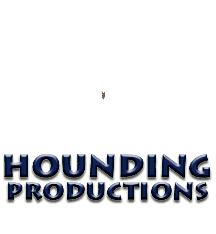| Some Definitions | Issues and Examples to Consider | | Media Choices | A Bit of Humor |
Learning Objectives
By the end of this lesson, you should be able to:
- appreciate the connections between the medium of writing and other media
- appreciate the multimodal experience
- gain confidence in adapting your writing into alternative media
Part 1
Some Definitions
Multimodal Multimodal communication involves using a multiple approaches to reach multiple senses: sight, sound, smell, touch, even taste. For example, John Waters once created the film, Polyester, that was a multimodal experience: you watched the motion picture, which also had sound, and you also had an Odorama scratch-and-sniff card to accompany certain scenes.
Multimedia John Waters’s Polyester is also a multimedia experience in that it uses two media: the medium of film and the medium of the scratch-n-sniff card.
Multimodal and Multimedia Multimodal writing involves use of various media, such as film, presentations, or digital writing. (You could even have a scratch-n-sniff card!) Consider your researched essay, which you share with others via Google Drive: the medium (a Google document) is located on a server, allowing access via a browser from multiple places. If you imbed charts, videos and/or images into your text, you make it multimedia and, because you are now making us of more than one type medium (a word processor plus at least one other medium, such as a chart or video) it is also now multimodal.
Consider this video:
While this video has absolutely nothing to do with this lesson page (which is, by the way, a dynamic web page generated via WordPress and hosted on server space that I rent), it still helps to convert this originally one medium (a web page) into a multimedia of multimodal experiences. It doesn’t matter that this second medium, this video, has nothing to do with the point being made here; it’s still a multimedia/multimodal experience—just not a very cohesive one! Incidentally, the links that I included in this paragraph also contribute to the multimodal experience, but since they are (apparently) links to other websites, it is questionable if they are also contributing to a multimedia experience because, until you click on the link, you have no way of knowing if it will take you to a video or just to another web page full of nothing but text. Below is a video that explains multimedia and multimodal systems in greater depth.
As Carey Jewitt argues,
All teaching and learning in the school classroom involves a range of modes including speech, writing, gesture, gaze, body-posture, movement, and so on–in other words teaching and learning are multimodal. This is as true of school English, where common-sense would have it that teaching and learning are fully realized in language, as it is of school Science where the role of action is firmly established in the curriculum. Jewitt, Carey. “Re-thinking Assessment: Multimodality, Literacy and Computer-mediated Learning.” (Abstract) Assessment in Education: Principles, Policy & Practice 10.1 (March 2003): 83-102.
The use of computers only emphasizes this point, and the experiences (good or bad) in this online class have clearly illustrated it! There is no getting around the fact that the printing press is taking a back seat to the digital word, and so it seems appropriate for you to have a final lesson that transitions you fully from writing-for-paper to writing-for-cyberspace. Composition on cyberspace has limitations, just as paper has limitations. For example, physical limitations of paper allow for a finite number of characters (words, sentences, paragraphs,…) on a page; code limitations of the internet (at present) allow for a finite arrangement of characters (words, sentences, paragraphs): you can’t indent paragraphs, and block quoting is also difficult to achieve.
Multimodal writing also means multimedia writing. For example, in printed works, one does not add a picture or diagram unless it illustrates or supports a point. The same is true for online works, but the possibilities go far beyond pictures or diagrams–to hyperlinks, video, music, other sounds,…. An essay on paper is one medium form of that essay. An essay on a blog is able to be multi-media (more than one medium). We have to remember that form (how the writing is designed, how works are cited,…) is supposed to serve the content (how we construct the arguments to be best understood). In addition, we have to recognize that sometimes the form can overwhelm the content.
Part 2
Issues & Examples to Consider
The below is a nice example of a multimodal video experience:
Thinking about multimodal in slightly a different way:
Part 3
With the exception of writing a multimedia article, most of of these media choices involve condensing your researched essay into some sort of presentation. You should also consider that it is possible to place some media within other media: a video can be embedded into a slide presentation, for example. Before you do any of that, prepare your researched essay for adapting. You want to keep all the information, but you want to make sure that it is organized in an accessible manner.
Some Media Choices:
The UNICORN Castle (A VR Space)
Canva Presentation
Google Slides
GOOGLE SLIDES is located in your KSU Google Drive.
Adobe Spark
Prezi
YouTube
Animoto
Easelly Infographic Maker
Easelly is a simple infographic maker that lets you visualize any kind of information.
-
 Create reports people will actually read
Create reports people will actually read Spice up your next big presentation
Spice up your next big presentation Get more people to share your content
Get more people to share your content Help customers understand your product
Help customers understand your product Make a resumé hiring managers can’t ignore
Make a resumé hiring managers can’t ignore
Storyboard That
Powtoon
A bit of humor . . .

